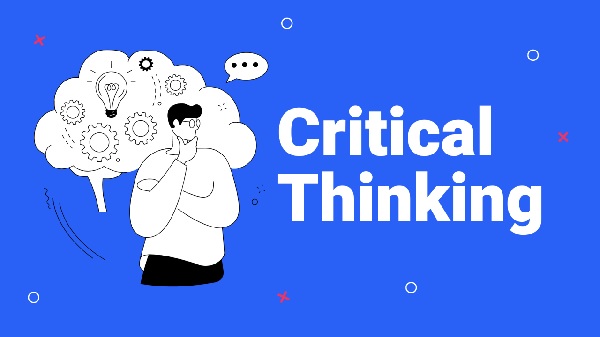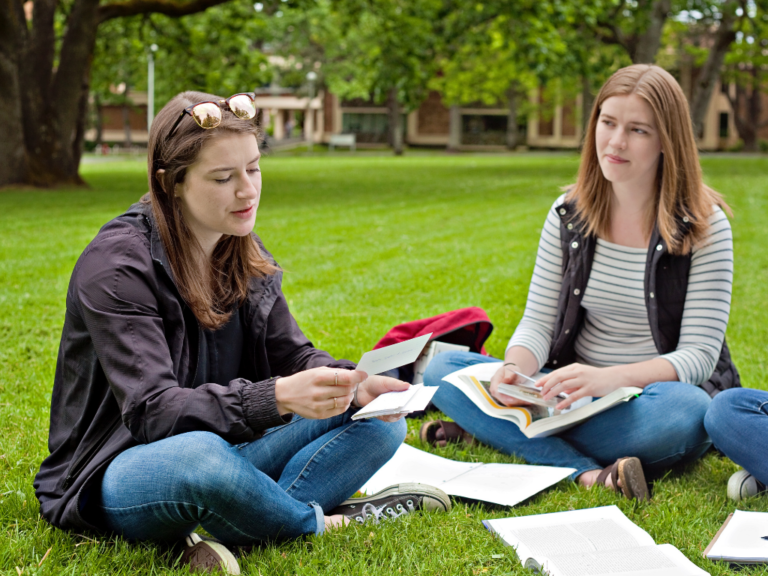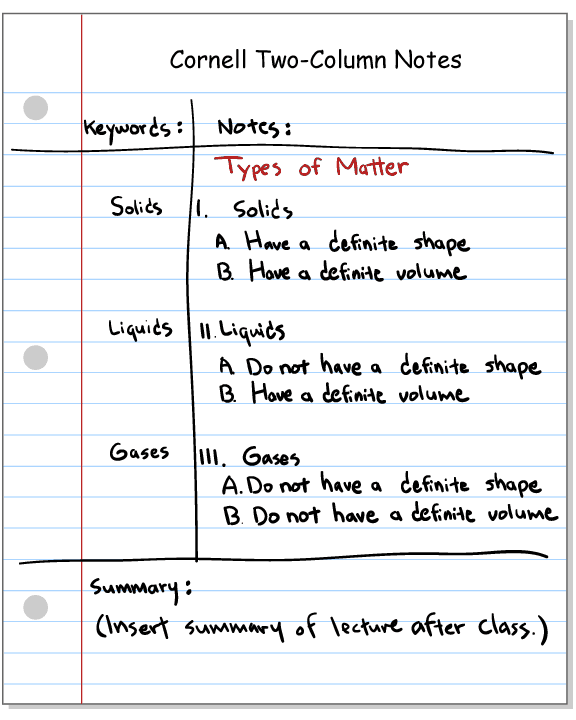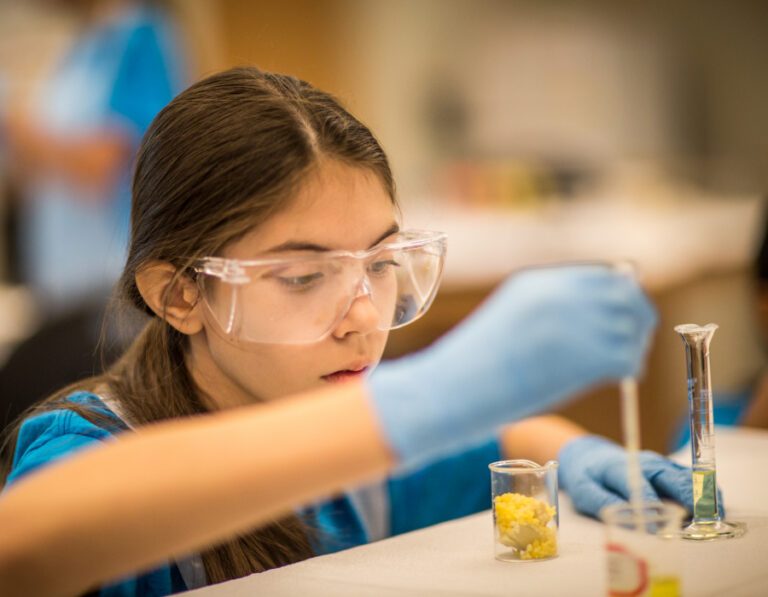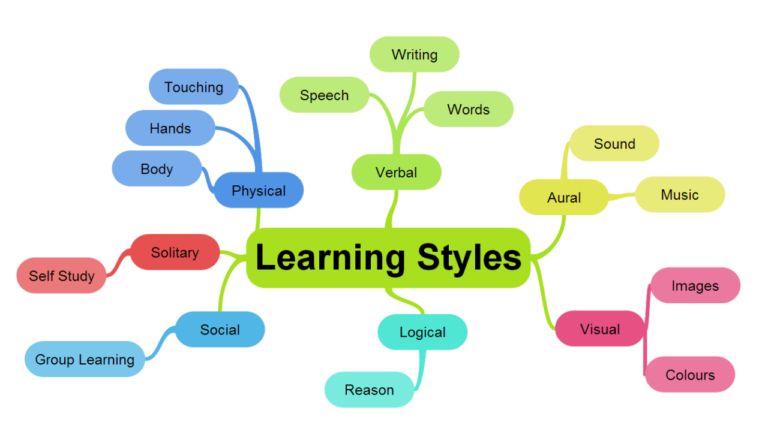The Importance of Critical Thinking in Education
In today’s fast-paced world, many individuals find themselves juggling work and study commitments. Whether pursuing a degree while working full-time or balancing part-time studies with a job, maintaining a healthy balance is crucial for success. This article explores effective strategies to help you manage your time, prioritize tasks, and achieve your academic and professional goals without sacrificing well-being.
1. Understanding the Challenge
Balancing work and study can be overwhelming. The demands of coursework, deadlines, and job responsibilities often lead to stress and burnout. Recognizing the challenges is the first step in developing effective strategies to manage both areas successfully.
Common Challenges
- Time Constraints: Limited hours in the day can make it difficult to fulfill both academic and professional obligations.
- Fatigue: Juggling responsibilities can lead to physical and mental exhaustion.
- Decreased Performance: Poor time management may result in lower quality work in both studies and job performance.
2. The Importance of Balance
Achieving a balance between work and study is essential for long-term success. A harmonious approach not only enhances productivity but also contributes to overall well-being.
Benefits of Balance
- Increased Productivity: A well-structured schedule allows for more efficient use of time.
- Improved Well-Being: Maintaining balance reduces stress and promotes mental health.
- Enhanced Learning: When stress is managed, students can absorb and retain information more effectively.
3. Strategies for Success
3.1 Effective Time Management
Time management is the cornerstone of successfully balancing work and study. Implementing techniques to manage your time wisely can make a significant difference.
Tips for Effective Time Management:
- Use a Planner: Keep a digital or paper planner to track deadlines and commitments.
- Set a Routine: Establish a daily routine that allocates specific times for work, study, and leisure.
- Break Tasks into Smaller Steps: Divide larger tasks into manageable parts to prevent feeling overwhelmed.
3.2 Setting Clear Goals
Establishing clear, achievable goals is crucial for maintaining focus and direction.
SMART Goals:
- Specific: Define clear, specific objectives.
- Measurable: Ensure you can track your progress.
- Achievable: Set realistic goals based on your current workload.
- Relevant: Align your goals with your long-term aspirations.
- Time-Bound: Set deadlines to foster accountability.
3.3 Prioritizing Tasks
Prioritization helps you focus on what matters most. Identifying urgent tasks ensures that you meet deadlines without unnecessary stress.
Prioritization Techniques:
- Eisenhower Matrix: Categorize tasks into four quadrants based on urgency and importance.
- ABC Method: Rank tasks as A (high priority), B (medium priority), or C (low priority).
3.4 Creating a Support System
Having a reliable support system can alleviate stress and provide encouragement. Surround yourself with individuals who understand your commitments.
Building a Support System:
- Communicate with Employers: Inform your employer about your academic commitments; they may offer flexibility.
- Engage with Classmates: Collaborate with peers for study sessions, sharing notes and resources.
- Seek Guidance from Advisors: Academic advisors can offer strategies and resources to help you balance responsibilities.
3.5 Utilizing Technology
Leveraging technology can enhance your efficiency and organization. There are numerous tools available to assist in managing time and tasks.
Recommended Tools:
- Task Management Apps: Use apps like Todoist or Trello to keep track of assignments and deadlines.
- Calendar Apps: Google Calendar can help you schedule and remind you of important events.
- Study Aids: Platforms like Quizlet and Evernote can aid in studying and note-taking.
3.6 Practicing Self-Care
Self-care is often overlooked but is essential for maintaining balance. Taking care of your physical and mental health enables you to perform better academically and professionally.
Self-Care Practices:
- Regular Exercise: Engage in physical activity to boost energy and reduce stress.
- Mindfulness and Meditation: Incorporate mindfulness practices to enhance focus and reduce anxiety.
- Adequate Sleep: Prioritize sleep to improve cognitive function and overall well-being.
4. Case Studies and Real-Life Examples
Case Study: Working Student Success
A student named Alex worked part-time while pursuing a degree in engineering. By implementing effective time management strategies and setting clear goals, Alex successfully balanced both commitments. Using a planner to schedule study sessions around work shifts, Alex increased productivity and maintained high academic performance.
Real-Life Example: Flexible Work Arrangements
Many companies now offer flexible work arrangements to support employees pursuing education. For instance, a marketing professional at a tech company negotiated a hybrid work schedule that allowed her to attend classes while fulfilling her job responsibilities. This arrangement enhanced her focus and job satisfaction.
5. Conclusion
Balancing work and study is undoubtedly challenging, but with the right strategies and support, it is achievable. By implementing effective time management techniques, setting clear goals, and prioritizing self-care, individuals can navigate the complexities of work and education successfully.
In a world where both professional and academic demands are on the rise, cultivating a balanced approach is not just a necessity—it’s a path to success. With dedication and the right tools, you can excel in both your studies and your career, paving the way for a fulfilling future.
The Impact of Sleep on Academic Performance
Sleep is often overlooked in discussions about academic success, yet it plays a crucial role in cognitive function, memory retention, and overall well-being. In the fast-paced world of education, students frequently sacrifice sleep for studying or socializing, unaware of the significant impact this can have on their academic performance. This article explores the relationship between sleep and academic achievement, highlighting the importance of quality rest for students.
Table of Contents
- Understanding Sleep and Its Phases
- The Science of Sleep and Learning
- Effects of Sleep Deprivation on Academic Performance
- 3.1 Cognitive Function
- 3.2 Memory Retention
- 3.3 Emotional Well-Being
- Strategies for Improving Sleep Quality
- The Role of Schools and Educators
- Conclusion
1. Understanding Sleep and Its Phases
Sleep is a complex physiological process essential for various bodily functions, including learning and memory consolidation. It consists of several stages, primarily categorized into:
- Non-REM Sleep: This phase includes three stages, where the body undergoes physical restoration and growth. It is during this stage that the brain processes information and forms memories.
- REM Sleep: Rapid Eye Movement (REM) sleep is critical for emotional regulation and cognitive functioning. Most dreaming occurs during this phase, which is vital for problem-solving and creativity.
Sleep Cycles
A typical sleep cycle lasts about 90 minutes, and a healthy adult usually experiences four to six cycles per night. Each cycle consists of a mix of non-REM and REM sleep, contributing to various restorative functions.
2. The Science of Sleep and Learning
Research has consistently shown that adequate sleep is linked to enhanced learning and academic performance. During sleep, the brain consolidates memories from the day, strengthening neural connections associated with learning. This process is crucial for effective recall and application of knowledge.
Neurotransmitters and Hormones
Several neurotransmitters and hormones involved in sleep also play roles in learning:
- Melatonin: Regulates sleep-wake cycles and influences alertness and mood.
- Cortisol: A stress hormone that can hinder cognitive performance when levels are elevated due to sleep deprivation.
- Growth Hormone: Released during deep sleep, this hormone is essential for physical health and development.
3. Effects of Sleep Deprivation on Academic Performance
3.1 Cognitive Function
Sleep deprivation can severely impair cognitive functions, including attention, critical thinking, and problem-solving skills. Students who do not get enough rest may find it challenging to concentrate during lectures or retain information for exams.
Research Findings: Studies indicate that students with consistent sleep deprivation score lower on tests and exhibit slower reaction times compared to well-rested peers.
3.2 Memory Retention
Adequate sleep is essential for memory consolidation, the process by which short-term memories are transformed into long-term memories. Lack of sleep disrupts this process, making it difficult for students to recall information when needed.
Evidence of Memory Impact: A study showed that students who pulled all-nighters before exams had significantly poorer recall and retention of material compared to those who prioritized sleep.
3.3 Emotional Well-Being
Sleep deprivation also affects emotional regulation and mental health. Students who experience chronic lack of sleep are more likely to suffer from anxiety and depression, both of which can further hinder academic performance.
Emotional Effects: Mood swings, irritability, and decreased motivation are common in sleep-deprived individuals, affecting their ability to engage in school activities and interactions.
4. Strategies for Improving Sleep Quality
To enhance academic performance, students should prioritize good sleep hygiene. Here are some effective strategies:
4.1 Establish a Consistent Sleep Schedule
Going to bed and waking up at the same time each day helps regulate the body’s internal clock, improving sleep quality over time.
4.2 Create a Relaxing Bedtime Routine
Engaging in calming activities before bed, such as reading or practicing mindfulness, can help signal to the body that it is time to wind down.
4.3 Limit Screen Time
Reducing exposure to screens (phones, computers, TVs) at least an hour before bedtime can help improve sleep quality, as the blue light emitted can disrupt melatonin production.
4.4 Optimize the Sleep Environment
Ensure that the sleep environment is conducive to rest. This includes a comfortable mattress, minimal noise, and a cool, dark room.
4.5 Watch Caffeine and Food Intake
Limiting caffeine and heavy meals before bedtime can prevent sleep disruptions. It’s best to avoid caffeine in the late afternoon and evening.
5. The Role of Schools and Educators
Educators and schools play a critical role in promoting healthy sleep habits among students. Here are some initiatives that can be implemented:
5.1 Education on Sleep Importance
Integrating sleep education into health curricula can help students understand the benefits of good sleep hygiene and its direct impact on academic performance.
5.2 Flexible Scheduling
Schools can consider later start times to accommodate the sleep needs of adolescents, who naturally have different sleep cycles.
5.3 Supportive Policies
Encouraging policies that recognize the importance of mental health and sleep, such as reduced homework loads during exam periods, can promote better balance.
6. Conclusion
The impact of sleep on academic performance cannot be overstated. Adequate sleep enhances cognitive function, memory retention, and emotional well-being, all of which are vital for academic success. As students navigate their educational journeys, prioritizing sleep should be a fundamental aspect of their study habits.
By implementing effective sleep strategies and fostering a supportive educational environment, students can enhance their learning experiences and achieve their academic goals. Recognizing the importance of rest is essential for not only academic achievement but also overall health and well-being. As the adage goes, “A well-rested mind is a productive mind.”
Exploring Alternative Learning Methods: Beyond Traditional Classrooms
In an ever-evolving educational landscape, alternative learning methods have gained traction as effective means to engage students, cater to diverse learning styles, and enhance overall educational outcomes. Traditional classrooms, while still valuable, may not suit everyone. This article explores various alternative learning methods, their benefits, and how they can complement or even replace traditional educational approaches.
Table of Contents
- The Need for Alternative Learning Methods
- Types of Alternative Learning Methods
- 2.1 Project-Based Learning
- 2.2 Experiential Learning
- 2.3 Online and Blended Learning
- 2.4 Montessori and Waldorf Education
- 2.5 Flipped Classroom Model
- Benefits of Alternative Learning Methods
- Implementing Alternative Learning in Schools
- Conclusion
1. The Need for Alternative Learning Methods
The traditional education system, characterized by standardized curricula and lecture-based instruction, may not adequately meet the needs of all students. Factors such as varying learning styles, technological advancements, and the demand for practical skills necessitate exploring alternative methods that promote active engagement and personalized learning.
Challenges of Traditional Education
- One-Size-Fits-All Approach: Traditional classrooms often fail to accommodate diverse learning preferences.
- Passive Learning: Many students remain passive recipients of information, which can hinder retention and understanding.
- Limited Real-World Application: Students may struggle to see the relevance of theoretical knowledge to real-life scenarios.
2. Types of Alternative Learning Methods
2.1 Project-Based Learning
Project-Based Learning (PBL) emphasizes hands-on, real-world projects that require students to investigate and respond to complex questions or challenges.
Key Features:
- Students work in teams to solve problems.
- Learning is interdisciplinary, integrating multiple subjects.
- Assessment is based on project outcomes and presentations.
2.2 Experiential Learning
Experiential Learning focuses on learning through experience and reflection. This method encourages students to actively engage in their education by participating in activities that are directly relevant to their lives.
Key Components:
- Concrete Experience: Students engage in a hands-on activity.
- Reflective Observation: Students reflect on their experiences and observations.
- Abstract Conceptualization: Students develop theories or concepts based on their reflections.
- Active Experimentation: Students apply their learning in new situations.
2.3 Online and Blended Learning
With the rise of technology, online and blended learning environments have become increasingly popular. These methods combine traditional face-to-face instruction with online components.
Advantages:
- Flexibility in scheduling and location.
- Access to a wider range of resources and materials.
- Opportunities for personalized learning paths.
2.4 Montessori and Waldorf Education
Both Montessori and Waldorf education systems emphasize child-centered learning, focusing on individual growth and development.
- Montessori Education: Children learn at their own pace in mixed-age classrooms, engaging in hands-on activities and self-directed learning.
- Waldorf Education: This approach integrates arts and crafts into the curriculum, fostering creativity and imagination while providing a holistic education.
2.5 Flipped Classroom Model
In the flipped classroom model, traditional homework and in-class instruction are reversed. Students learn new content at home through videos or readings and engage in hands-on activities and discussions during class time.
Benefits:
- Promotes active learning during class.
- Allows teachers to provide personalized support.
- Encourages collaboration among students.
3. Benefits of Alternative Learning Methods
Enhanced Engagement
Alternative learning methods often involve active participation, which can lead to greater student engagement. When students are actively involved in their learning, they are more likely to retain information and develop a genuine interest in the subject matter.
Tailored Learning Experiences
Alternative methods can accommodate various learning styles and paces, allowing students to learn in ways that best suit them. This personalization can lead to better educational outcomes and increased student satisfaction.
Development of Critical Skills
Many alternative learning approaches emphasize critical thinking, problem-solving, and collaboration. These skills are essential for success in today’s complex world and are often overlooked in traditional educational settings.
Real-World Relevance
By focusing on practical, real-world applications, alternative learning methods help students understand the relevance of their studies. This connection can increase motivation and prepare students for future challenges.
4. Implementing Alternative Learning in Schools
4.1 Training Educators
To effectively implement alternative learning methods, educators must receive training and support. Professional development programs can help teachers adapt their instructional strategies and create an inclusive classroom environment.
4.2 Creating Flexible Learning Environments
Schools should consider redesigning physical spaces to support alternative learning approaches. Flexible seating arrangements, collaborative workspaces, and access to technology can enhance the learning experience.
4.3 Encouraging Community Involvement
Incorporating community resources, such as local organizations and businesses, can enrich alternative learning experiences. Collaborations can provide students with real-world projects and mentorship opportunities.
4.4 Assessing Progress
Assessment methods should align with alternative learning approaches. Instead of relying solely on standardized tests, educators can use portfolios, presentations, and peer evaluations to gauge student progress.
5. Conclusion
Alternative learning methods offer exciting opportunities to enhance educational experiences beyond traditional classrooms. By embracing project-based learning, experiential learning, online education, and other innovative approaches, educators can cater to diverse student needs and prepare them for a dynamic future.
As we continue to evolve our understanding of effective teaching and learning, it is essential to recognize the value of alternative methods in fostering engagement, critical thinking, and real-world relevance in education. The future of learning lies in flexibility, creativity, and the willingness to explore new horizons.
The Importance of Critical Thinking in Education
In today’s rapidly changing world, critical thinking has emerged as an essential skill for students of all ages. As information becomes more readily available and complex, the ability to analyze, evaluate, and synthesize information is paramount. This article explores the significance of critical thinking in education, its benefits, and effective strategies for fostering this vital skill in students.
Table of Contents
- Understanding Critical Thinking
- The Role of Critical Thinking in Education
- Benefits of Critical Thinking
- 3.1 Improved Academic Performance
- 3.2 Enhanced Problem-Solving Skills
- 3.3 Greater Independence
- 3.4 Better Decision-Making
- Strategies for Promoting Critical Thinking in the Classroom
- Challenges in Teaching Critical Thinking
- Conclusion
1. Understanding Critical Thinking
Critical thinking is the ability to think clearly and rationally about what to do or believe. It involves analyzing information, evaluating evidence, identifying biases, and making reasoned conclusions. This skill is not merely about accumulating knowledge; it’s about understanding how to apply that knowledge effectively.
Key Components of Critical Thinking
- Analysis: Breaking down complex information into smaller parts for better understanding.
- Evaluation: Assessing the credibility and relevance of information sources.
- Inference: Drawing logical conclusions from available data.
- Reflection: Considering the implications and consequences of different viewpoints.
2. The Role of Critical Thinking in Education
Critical thinking plays a pivotal role in education by encouraging students to engage actively with the material rather than passively receiving information. It prepares students for real-world challenges, fostering a mindset that values inquiry, skepticism, and thoughtful consideration of various perspectives.
Educational Objectives
Educational systems aim not just to impart knowledge but to cultivate thinkers who can navigate complexity, challenge assumptions, and contribute to society meaningfully. Critical thinking aligns with these objectives by promoting a more engaged and reflective approach to learning.
3. Benefits of Critical Thinking
3.1 Improved Academic Performance
Students who develop critical thinking skills often perform better academically. They are more equipped to analyze texts, conduct research, and engage in discussions. This depth of understanding can lead to higher grades and a more profound appreciation for the subject matter.
3.2 Enhanced Problem-Solving Skills
Critical thinking fosters robust problem-solving skills. Students learn to approach challenges systematically, breaking them down into manageable parts, and evaluating potential solutions. This skill is invaluable in both academic settings and future careers.
3.3 Greater Independence
Students who think critically become more independent learners. They develop confidence in their ability to evaluate information, make decisions, and pursue knowledge autonomously. This independence is crucial for lifelong learning.
3.4 Better Decision-Making
Critical thinking empowers students to make informed decisions based on evidence and logical reasoning. In an age of misinformation, the ability to discern credible sources and evaluate options is essential for personal and professional success.
4. Strategies for Promoting Critical Thinking in the Classroom
4.1 Encourage Open Dialogue
Creating a classroom environment that values discussion and debate encourages students to express their thoughts and question assumptions. Open dialogue fosters a culture of inquiry where differing viewpoints are explored.
4.2 Use Real-World Scenarios
Integrating real-world problems into lessons allows students to apply critical thinking skills in practical contexts. Case studies, simulations, and project-based learning can help bridge the gap between theory and practice.
4.3 Teach Questioning Techniques
Encouraging students to ask questions fosters curiosity and critical thinking. Techniques such as the Socratic method, where teachers pose open-ended questions, can stimulate deeper thinking and exploration.
4.4 Promote Reflection
Reflection activities, such as journals or group discussions, allow students to consider their learning processes and the conclusions they reach. This practice enhances self-awareness and critical analysis of their thought processes.
4.5 Incorporate Technology
Technology offers various tools and resources that can enhance critical thinking. Online forums, research databases, and simulation software can provide students with opportunities to explore information critically.
5. Challenges in Teaching Critical Thinking
Despite its importance, teaching critical thinking can be challenging. Some of the main obstacles include:
- Standardized Testing: A focus on rote memorization for tests can detract from critical thinking instruction.
- Resistance to Change: Some educators may feel uncomfortable shifting away from traditional teaching methods.
- Lack of Resources: Schools may lack the materials or training needed to effectively teach critical thinking.
6. Conclusion
The importance of critical thinking in education cannot be overstated. It is essential for academic success, personal growth, and professional development. As students learn to navigate complex information and make informed decisions, they become better equipped to face the challenges of the future.
Educators play a crucial role in fostering critical thinking through innovative teaching strategies and a supportive learning environment. By prioritizing this skill, we prepare students not only for academic achievement but also for meaningful contributions to society. In a world where information is abundant and often misleading, critical thinking stands as a cornerstone of informed citizenship and lifelong learning.
